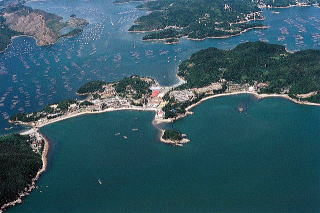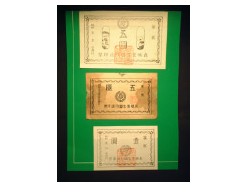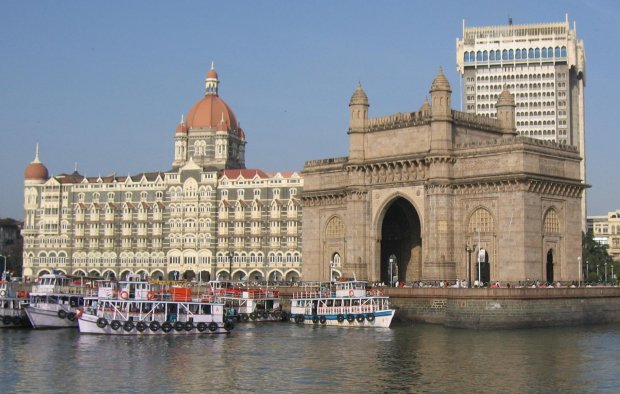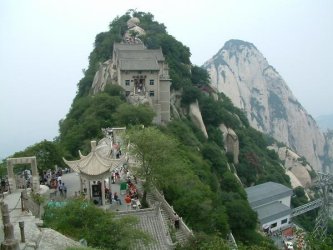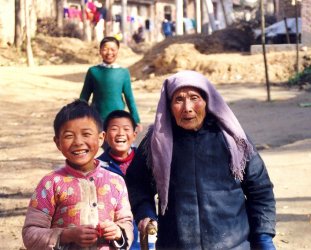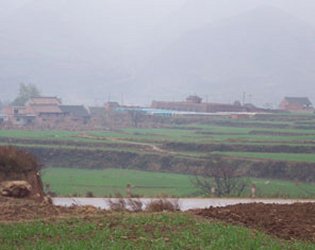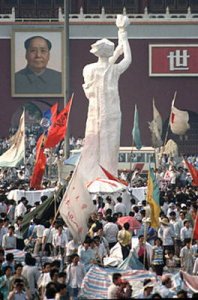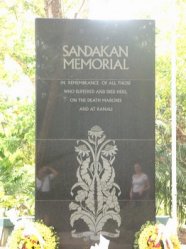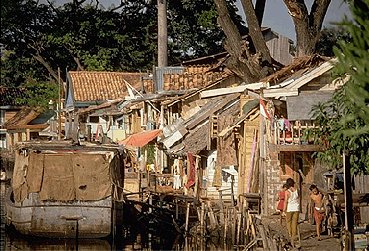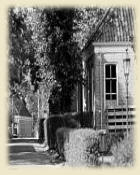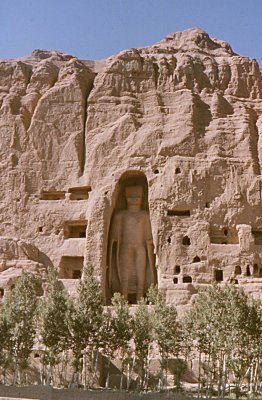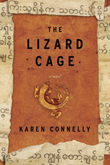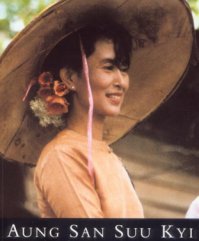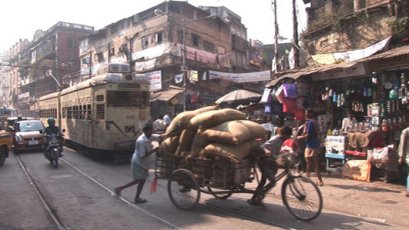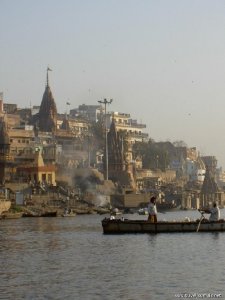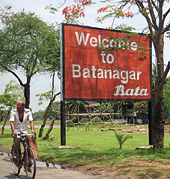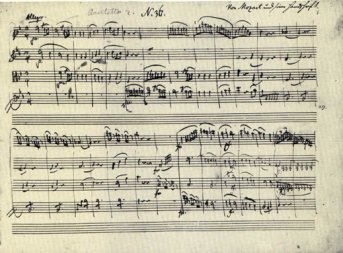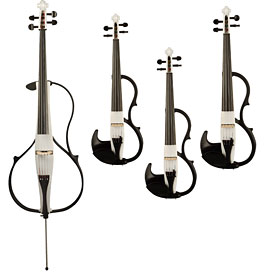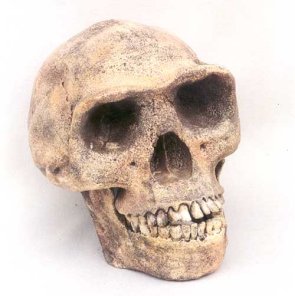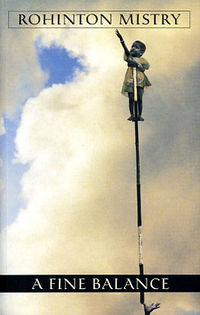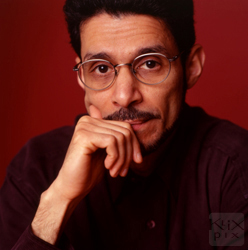Ghost Wars, the Secret History of the CIA, Afghanistan, and Bin Laden, From the Soviet Invasion to September 10, 2001, Steve Coll, 2007
Lengthy but meticulous study focusing on the CIA role in Afghanistan, this book is a long delineation of little known detail with a minimum of interpretive conclusion: “Just the facts, ma’am.” Treatment is quite sterile and it is easy to imagine the equally sterile environment and personalities of American policy makers in air conditioned offices in Washington trying to formulate a policy toward a place about which they don’t care, don’t know, and have given almost no thought.
Ronald Reagan and William Casey

When the Soviet Union invaded Afghanistan to shore up their communist client government from mujahedin insurgents, Reagan officials saw a golden opportunity to kill Russians by funneling money and arms to the insurgents. After winning Reagan the Republican nomination assuring himself of any cabinet post he wanted, William Casey, who ran spies inside Germany in the closing days of WWII for the OSS, chose to become Director of the CIA. The militant Jesuit trained Casey liked the idea of militant Isamic jihadist fighting the Soviets in Afghanistan.
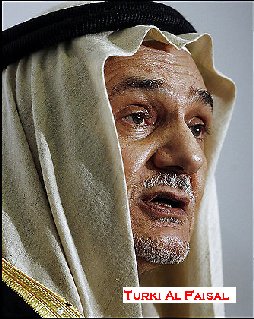
He found a close ally in Prince Turki al-Faisal, son of king Faisal, the Georgetown Jesuit educated Saudi head of intelligence the GID. Together they funneled as much as $500,000 a year to the mujahedin. To maintain plausible deniability, (although everyone knew) the money and arms were fed largely through the Pakistan intelligence network, the ISI, giving them enormous power and influence inside Pakistan and out. Compared to the billions Afghanistan was costing the Soviets, the CIA and GID programs seemed an efficient bargain at the time. Afghanistan became the most costly covert effect ever for the CIA.
Ahmed Shah Massoud

The ISI, operating largely independently of Pakistan political and military control was dominated by Pashtun Pashto speaking personnel. They made sure the lions share of money and arms went to loyal Pashtun mujahedin, largely to Hekmatyar. Uzbeks, Tajiks, Turkmen and other Shia minority mujahedin received relatively little support until the CIA started dealing directly with these minority leaders like Ahmed Shah Massoud, who dominated the Panjshir Valley and was in the position to cut off the all important Salang highway, the central supply route from the Soviet Union.
A side effect of all this largess was the establishment of training camps for jihadists from Algeria and Morrocco all the way to Indonesia and the Phillipines including a heavy weighting of Arabs. An entire generation of holy warriors was prepared to return to their home countries to fight for the establishment of Ismamic states. The CIA was indifferent to this and only one American, the multilingual Edmund McWilliams voiced any concern over the long term implications of this radical training and indoctrination. At least one school near Peshawar, the epicenter of this training activity was funded and headed by Osama bin Laden. bin Laden was an unfavored son of a powerful family involved in construction for the Saudi royal family. While his half brothers attended school abroad, Osama attended a radical Islamic school at home. After school, in 1981 Osama went to Pakistan to join the jihad. The authors found evidence of only one skirmish between bin Laden’s funded group and the Communists in which a few followers were killed and bin Laden may have been shot in the foot. This small skirmish seemed to have ignited bin Laden into the megalomaniac he became.
At the time of the Soviet withdrawal from Afghanistan there were 33,000 madrassas teaching fundamental Islamic faith and jihad in Pakistan. For an account of a lone American building secular schools in Pakistan see
Firing Stinger Missile
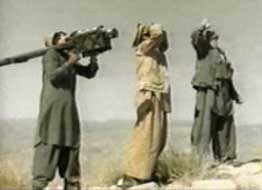
The Soviet Union had spent $48 billion and the US, China, and Saudis spent $12 billion. Afghanistan was in ruins. Afghanistan had more personal weapons than India and Pakistan combined. Anti tank rocket launchers were everywhere, and of 2500 Stinger anti aircraft heat seeking missiles shipped into Afghanistan, over 600 were unaccounted for. The CIA abandoned all efforts in Afghanistan except to attempt to buy back Stinger missiles at $150,000 each to keep them out of Iranian hands. despite CIA efforts, at the time of the Taliban takeover an estimated 100 Stingers were in Iran and the Taliban had 50 or 60 which they refused to give up.
Much of the $12 billion from the US and Saudis had been funneled through the Pakistani ISI. The US cut off most of its other aid and imposed sanctions on Pakistan to try to stop the development of atomic weapons. Pakistan went ahead and tested their first nuclear bomb in 1998. The influence of the US was at a very low point during this period.
After the Soviet departure, Afghanistan descended into a guagmire. The stalemate with the Najibullah communist government was broken when Uzbek communist commander Aburrashid Dostum defected to Massoud’s Supreme Council. Kabul fell to Dostum and Massoud but Pashtun rival Hekmatyar took a portion of Kabul and the two groups proceeded to destroy much of the city and kill thousands of civilians.
When Iraq invaded Kuwait in 1991 and the US joined Saudi Arabia to expel them, extremist jihadists throughout the world including bin Laden and Hekmatyar denounced the Saudi royal family for inviting an infidel army into the holy land of Saudi Arabia. Surprised, the GID and Turki started funneling even more money to the extremist groups in a effort to neutralize their anti Saudi sentiments. As one GID official put it, “we don’t do operations, we write checks.” One result of the controversy over Kuwait was the Saudi falling out with Osama bin Laden. Bin Laden proposed to the royal family a plan to send 60,000 of his own private fighters to drive Iraq out of Kuwait. When he continued to criticize Saudi policy, he was expelled from Saudi Arabia and later lost his citizenship. He fled to Sudan which was the new safe haven for jidahists after Pakistan.
Mullah Omar
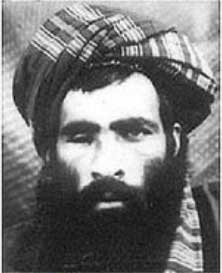
This new stalemate in Afghanistan continued until Durrani Pashtun English speaking Hamid Karzai, living in exile in Pakistan, threw his support behind the Taliban, a disciplined, principled, effective fighting group of radical, rural, Islamic fundamentalists. The ISI and GID started funneling support and weapons to the Taliban who quickly gained control of Kandahar and Herat in the west.

The reentry of the US and CIA was engineered by (what else) oil and gas, this time from Turkmenistan with Houston based Unocal proposing a pipeline from Turkmenistan across Afghanistan to Pakistan. This crazy idea which even Kissinger called “the triumph of hope over experience” attracted Clinton White House interest. Unocal got an agreement with Turkmenistan but the Benazir Bhutto government preferred an alternative proposal from Bridas of Argentina. The CIA was convinced Bridas had bribed Benazir Bhutto’s notoriously corrupt husband Zardari. Bridas may also have funneled as much as $1 million to Massoud to gain his approval for their pipeline proposal in north Afghanistan. Unocal approached the Taliban.
The US and Saudi Arabia warned Sudan that harboring terrorists would be bad for them. The Sudanese asked Turki of GID if the Saudis would take back bin Laden but they were unwilling. It is still unclear if Sudan offered to give bin Laden to US authorities. In any event, Sudan expelled bin Laden who moved to Jalalabad in Afghanistan. When the Taliban took Jalalabad bin Laden offered $3 million to the Taliban to bribe mujahedin commanders. Defections mounted and the Taliban took Kabul forcing Massoud to retreat to his Panjshir Valley in the north. Bin Laden moved to Kandahar. When the Taliban took Kabul, former communist president Najibullah was completing his translation of the British era history The Great Game into Pashto saying “Afghans keep making the same mistake.” The Taliban executed him. For an account that blames the partition of India to create Pakistan and drew the Afghan border on the British Great Game see
GID’s Turki flew to Kandahar to meet personally with Mullah Omar to try to convince the Taliban to deliver an increasingly Saudi embarrassing bin Laden to the Saudis. Omar seemed to agree but then nothing happened.
Unocal opened a permanent office in Kandahar right across the street from bin Laden’s compound. Unocal built a facility to train Afghani workers to build the pipeline right next to a bin Laden training facility. The CIA which by now had a dedicated bin Laden group never talked to Unocal officials or asked them for help watching bin Laden. Instead, CIA covert operations trained a group of Afghani fighters to try to intercept and capture bin Laden. This group may have ambushed a bin Laden convoy but failed to capture him. The CIA next planned an elaborate scheme to storm bin Laden’s Tarnak farm but the plan was never approved by George Tenet and the Clinton administration.
Where earlier American policy toward Afghanistan was motivated solely by the attempt to kill Soviets, now the policy was motivated solely by attempt to get or kill bin Laden. Nothing else mattered to policy makers. The special group at the CIA assigned to deal exclusively with bin Laden were nicknamed the Manson Family for their rabid maniacal obsession.
Then bin Laden blew up two US embassies in Africa. The administration which was unwilling to endanger civilians in the Tarnak farm plan were suddenly willing to send missiles into Afghanistan to kill who knew who. Relying on typical bad CIA intelligence, Clinton authorized two missile strikes, one on a near empty training camp in Zawhar Kili and one on a pharmaceutical plant in Khartoum, Sudan. The CIA had wanted to hit more targets. Critics called the strikes Clinton’s Wag the Dog strategy to divert attention away from his sex scandal and impeachment. A covert ground operation suddenly looked more attractive. Despite several opportunities including bin Laden’s presence in an isolated hunting camp for a week, the administration never authorized another strike. When CIA bad intelligence caused the US to blow up the Chinese embassy in Belgrade by mistake in 1999, Tenet and Clinton never authorized another serious attempt on bin Laden.
Throughout the Taliban and bin Laden Afghanistan era, the US continued to rely on Pakistan and Saudi intelligence even though both countries were actively supporting the Taliban and bin Laden was actively training Arab fighters that Pakistan could deploy in Kashmir in their conflict with India. Moussoud, who fought al Qaeda troops regularly and once trapped bin Laden behind his lines, never received serious US arms and support. Moussoud had to rely on Iranian and Russian support to stay in action. Moussoud was assassinated by jihadists on the eve of the September 11 attacks.
A new deal on the oil and gas pipeline was signed on 27 December 2002 by the leaders of Turkmenistan, Afghanistan and Pakistan and in 2005 Asian Development Bank submitted the final version of feasibility study. The pipeline is currently stalled because the Taliban is still operating in areas crossed by the proposed pipeline.
For a complete look at the CIA’s failures see Legacy of Ashes.
For a closer look at the CIA’s efforts in Tibet see the CIA’s Secret War in Tibet.
